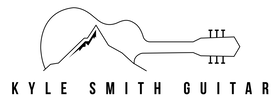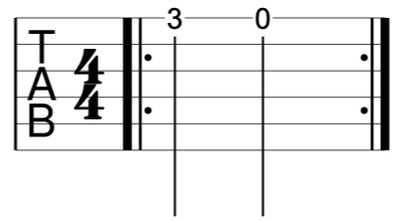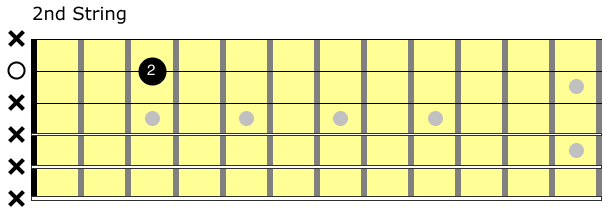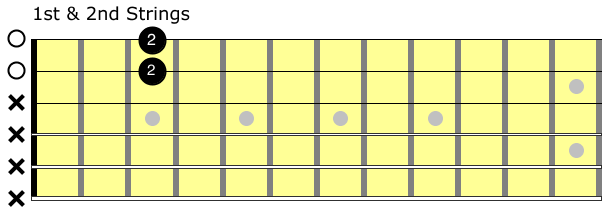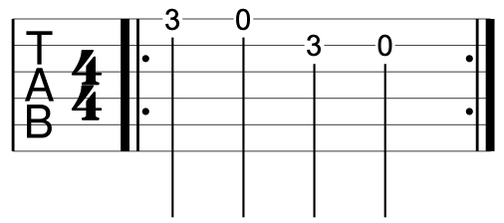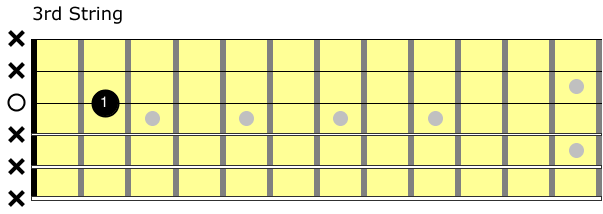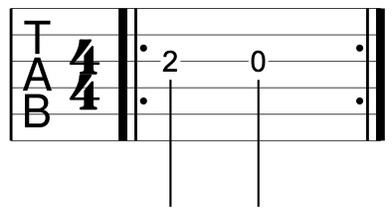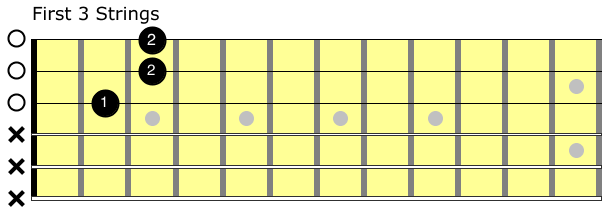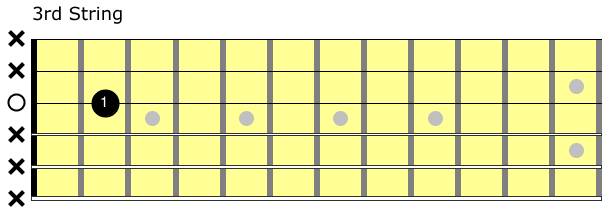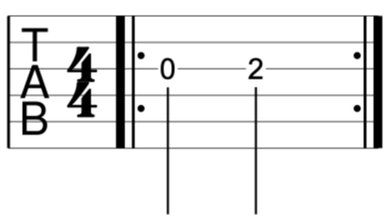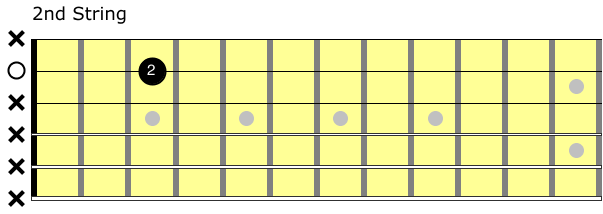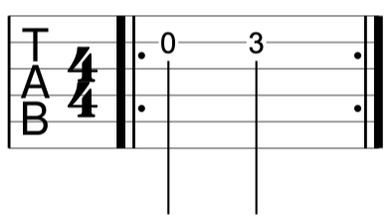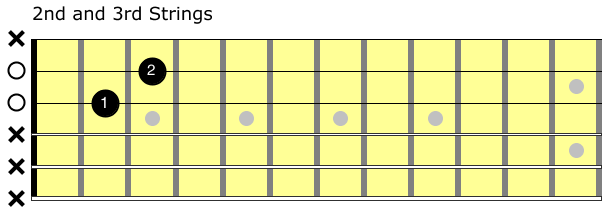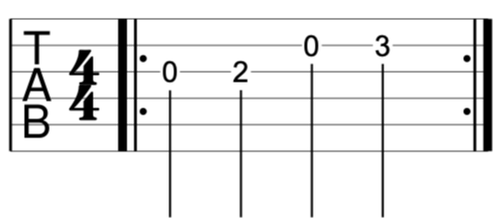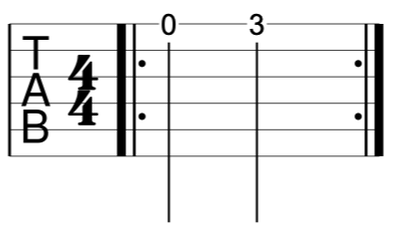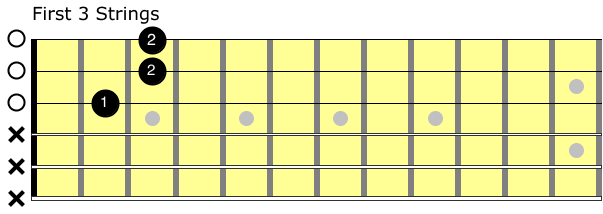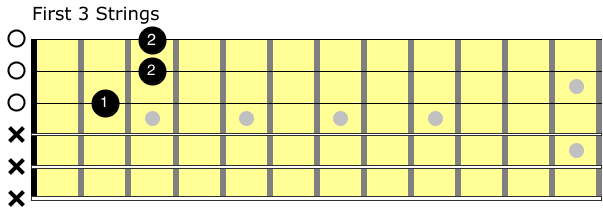 Scales can be intimidating for a lot of beginners learning to play guitar. In this beginners guitar lesson I'll show you a simple scale pattern that's easy, fun to play, and sounds good. Scales are an important skill for anyone learning to play guitar, whether you're just starting out or you've been playing for years. Scales are how we write and play melodies or guitar solos, help build your finger coordination, and get your left and right hands working together. By learning to play your G major pentatonic scale, you will be able to play melodies and improvise guitar solos in the key of G, and build a foundation of technique that will let you learn other scales as time goes on. In this lesson, we will cover 2 different directions for playing the G major pentatonic scale on the first 3 strings of your guitar:
Part 1: Descending FormWe say that a scale is descending when the notes start sounding high, and get lower as you go through the scale. This is one of the two basic directions that scales move in. 1st String:Start with your middle finger(2) on the 1st string, 3rd fret. Play that note once, then take your finger off and play the open 1st string. Repeat this until it feels easy. 2nd String:Start with your middle finger(2) on the 2nd string, 3rd fret. Play that note once, then take your finger off and play the open 2nd string. Repeat this until it feels easy. Combining 1st and 2nd Strings:Play each note in sequence:
Repeat this until it is easy to play, and feels comfortable. 3rd String:Start with your index finger (1) on the 3rd string, 2nd fret. Play that note once, then take your finger off and play the open 3rd string once. Repeat this until it feels easy. Combining 1st, 2nd, and 3rd Strings:Play each note in sequence:
Repeat this until it feels easy, and is comfortable for you to play. Part 2: Ascending FormA scale is called ascending when the notes start sounding low, and get higher as you go through the scale. This is one of the two basic directions that scales move in. 3rd String:Start with no fingers and play the open 3rd string once. Then put your index finger (1) on the 3rd string, 2nd fret and play that note. Repeat this until it is easy to play. 2nd String:Start with no fingers and play the open 2nd string once. Then put your middle finger (2) on the 2nd string, 3rd fret and play that note once. Repeat this until it feels easy. Combining 3rd and 2nd Strings:Play each note in sequence:
Repeat this until it is comfortable and easy to play. 1st String:Start with no fingers, and play the open 1st string once. Then put your middle finger (2) on the 1st string, 3rd fret and play that note once. Repeat this until it feels easy. Combining 3rd, 2nd, and 1st Strings:Play each note in sequence: No finger, 3rd string, open
Repeat this until it is comfortable and easy to play. Note:The ascending and descending scale exercises above are designed to help you build up to playing the full scale pattern on your guitar. You may or may not need all of the Descending Exercises and all of the Ascending Exercises in order to get your fingers comfortable with the scale pattern. Once you are comfortable with all three strings in each direction, there is no need to play the separate descending and ascending patterns. At that point, the full scale exercise (see below) is all you need. Full G Major Pentatonic Scale Exercise:First play the full descending scale pattern, and then play the full ascending pattern. You can also play the full ascending pattern first, followed by the full descending pattern. (This is how scales like this are typically presented in books and classes) Things To Think About:The G major pentatonic scale will help you start to play melodies and guitar solos on the first 3 strings of the guitar. You will also start to improve your finger coordination and picking - just by working on this scale. With practice, you will be able to play both the descending (notes sound lower as you go) and the ascending (notes sound higher as you go) versions of this scale easily and comfortably. Keep practicing this scale and if you have any questions, feel free to contact me. I’m always happy to help. Get Help With Guitar LessonsIf you want to improve your guitar playing or make sure you get started the right way, guitar lessons are the best way to make sure you're getting the help you need.
I can help you with private, one on one guitar lessons in NE Portland, or online guitar lessons. Guitar lessons are a lot of fun, and you can make good progress when you have a teacher to help you stay on the right track. Click the links to learn more about: My teaching style and approach are the same in both formats, so whether you are learning guitar in Portland or Online, you will get the same quality guitar lessons as my other students. I've had quite a few students switch from learning in person to taking online guitar lessons because of the convenience - you can learn from home, and you don't have the hassle of a commute across town! Questions? Contact me today and I'll help you out!
0 Comments
Your comment will be posted after it is approved.
Leave a Reply. |
